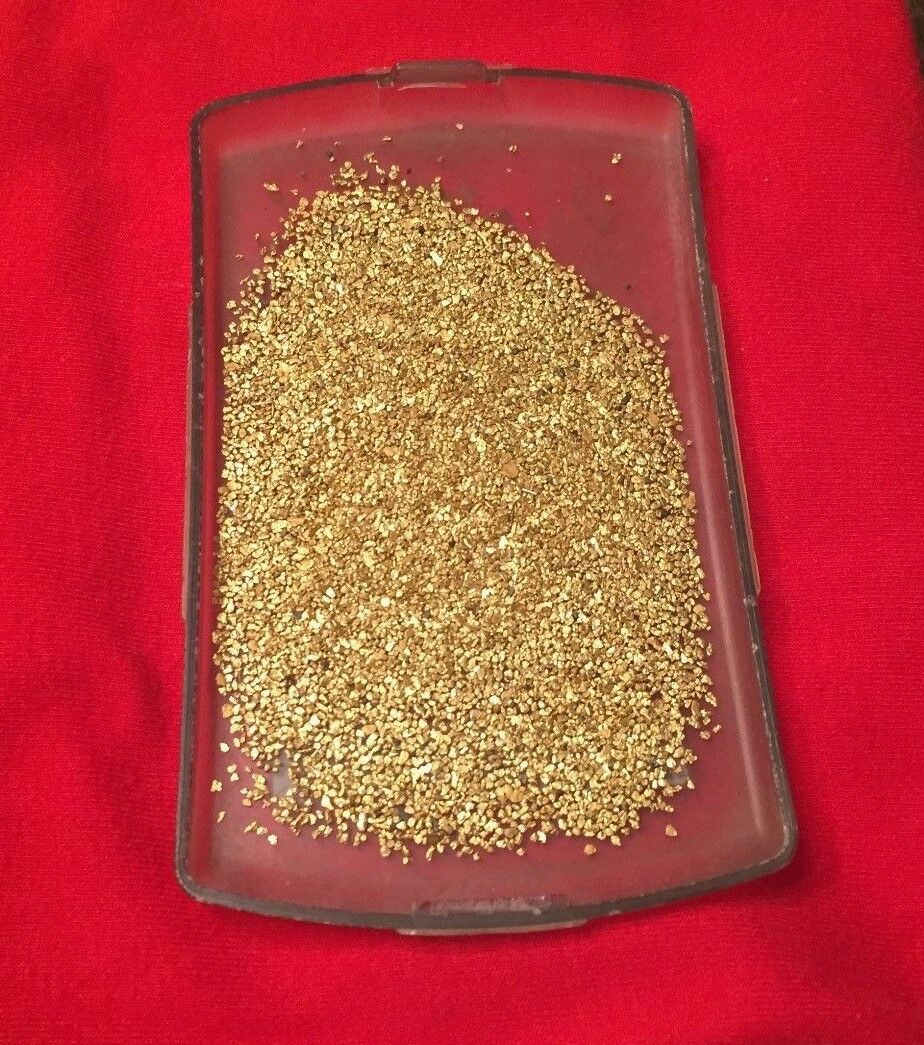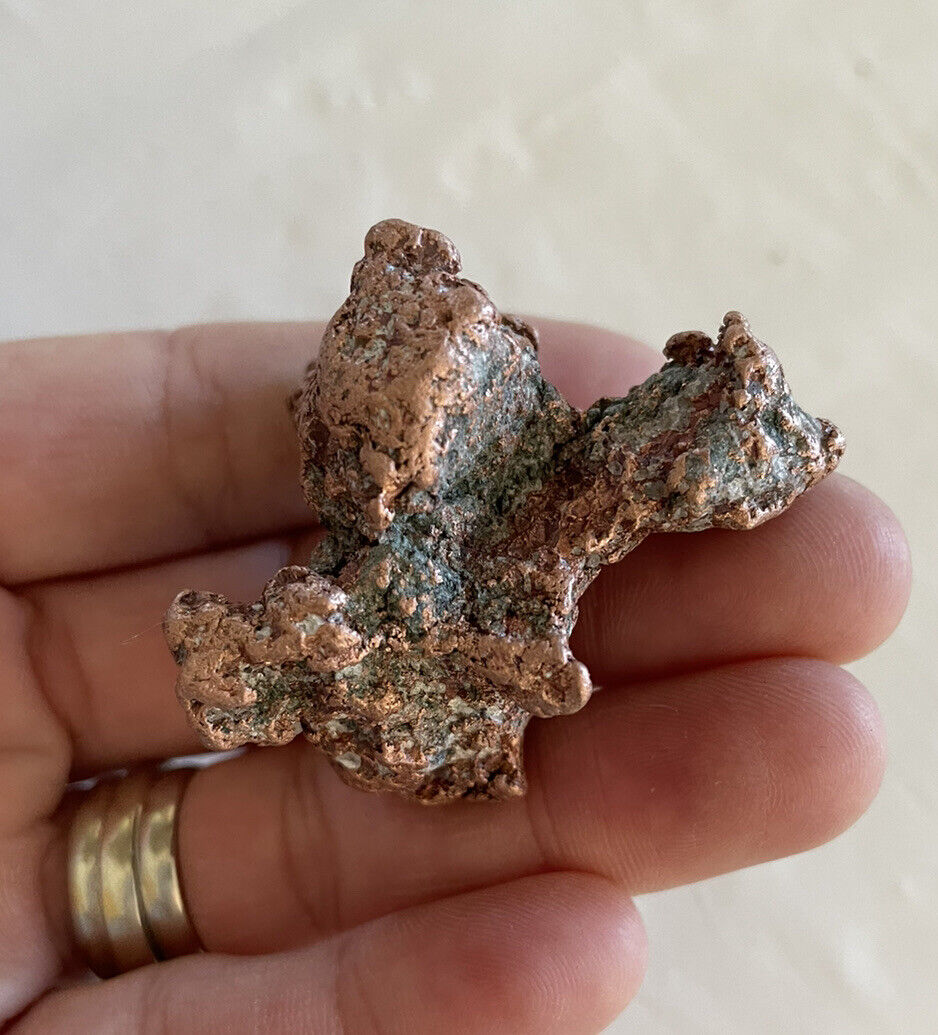-40%
GOLD QUARTZ SPECIMEN 5.5 GRAM NATURAL CALIFORNIA GOLD IN QUARTZ
$ 23.76
- Description
- Size Guide
Description
BLOOD STAINGOLD QUARTZ SPECIMEN
from
CALIFORNIA
R
uler is
1/4"
wide (6 mm). U.S. 10 cent coin is 17 mm in diameter.
S
pecimen weight:
5.5
G
ram -
88.7
G
rains
S
ize:
17.5X17.5X13.9
mm
M
ost quartz lucky enough to host gold is white. This piece shows mostly white rock with some oxidation staining. There's not a ton of gold contained, but it most definitely is gold and you won't need a loupe to see it. My source says it was found in the goldfields of California's Mother Lode.
For those who've kept track of my store these past several years, you'll know I don't sell low-grade specimens. If it shows real gold, it can't be low grade.
I sell authentic, naturally-occurring gold quartz ores with visible gold and other silicate/gold specimen. These high-grade beauties are hard-won and expensive to boot. My prices aren't based upon the amount of gold contained, but upon the authenticity, rarity and collectability of these unique pieces of the famed California Mother Lode.
U.S. SHIPPING - .00
(includes USPS tracking to all U.S. destinations)
INTERNATIONAL CUSTOMERS S&H
.00
FAST REFUND OFFERED
(If, for any reason, you're not happy with this item)
I poured through old mining dumps for years looking at orange-yellow-rusty rock through a loupe, but I never found a piece with visible gold.
Hydrothermal solutions carrying gold and silica crystallized into veins of gold quartz. This specimen comes from one of the many gold-bearing vein systems of California, The Golden State.
Weight Conversions:
15.43 GRAINS = 1 GRAM
31.103 GRAMS = 1 TROY OUNCE
24 GRAINS = 1 PENNYWEIGHT (DWT)
20 DWT = 1 TROY OUNCE
480 GRAINS = 1 TROY OUNCE
S & H
Discounted for combined shipments.
U.S. BUYERS & INTNL.
PAYMENTS
For U.S. buyers: We accept paypal
For intnl. customers: We accept paypal.
Pay securely with
www.paypal
.
Payment must be made within 7 days from close of auction. We ship as soon as funds clear. If you have questions, please ask them before bidding.
REFUNDS
We leave no stones unturned insuring our customers get what they bargained for.
If you're not satisfied with this item, contact me. Then, if the problem can't be fixed, return product within 30 days in 'as purchased' condition for a full refund
VIRGIN PAY AND PLACER REDEPOSITS
Whether you're on the hunt for redeposit or virgin ground, it takes testing. The onis is on you, the prospector, to make that happen. Wherever the goldfield, sediments need to be sampled for free Au content across their entire width whether it be in a creek-bed, a river channel, a dry-wash, an alluvial fan, or a pediment zone. A pan sample here and there isn't going to cut it. Pay-streaks meander. They're rarely uniform, so it's easy to miss one entirely. Incomplete sampling is the bane of the inept prospector. Placer deposits can be hidden just about anyplace within the complex topography of their surrounding terrain. It's not always confined to material on or just above bedrock. Oftimes, it's in transit; moving downhill from one elevation to the next in stepladder fashion. For proof, just check out the massive, surficial gold deposits of Australia. Now, if that were steep, vertical terrain instead of vast expanses of flat-land, those deposits would take on a whole different character than they have. In desert country including here in the states, you can expect to find surficial placer gold as well as deeply-buried deposits. Moving northward into Canada and the western states, you see massive river systems where annual seasonal flooding leaves behind sizable redeposits of gold on gravel bars at and just beneath the surface. One always has to wonder, if a redeposit is this good near the surface, what would a guy find at those same sites down on bedrock? Problem is, there's no way in hades you could ever reach bedrock on those bars. I dredged with a six inch for years. That puny little sucker hardly made a dent on a twenty foot deep mass of stratified alluvium. If you're familiar with mountainous terrain, you realize what a tall order comprehensive sampling is; much of the time, it's virtually impossible. Only operators outfitted with monster excavators, cats, front-end loaders, and such can open up high-yardage alluvial masses and test such ground effectively. Here, I'm referring, of course, to dry-land, above-the-water-table gravel deposits. If you're forced to test ground adjacent to active watersheds, good luck keeping out the water. Rest assured very little is assured or comes easy in this business. The general rule is the best pay-dirt will be concentrated on, in, and just above the bedrock of old river channels. This is not to say good ‘pay’ can’t be found in other stratified layers higher up in the sedimentary column. The famous ‘blue leads’ of British Columbia and the Yukon remain classic examples. In many instances, excellent flood gold re-deposits are encountered in the uppermost strata of the most recently-deposited stream/river gravels. Anything goes in desert and pediment-type deposits. In drier climes and areas where shallow-seated lode deposits continue to shed gold, placer gold is found lying very close to the surface. These represent readily-available targets to MDers hunting the many dry regions of the world.
Thanks for checking out our digs.
G
old of
E
ldorado
1-14-13














